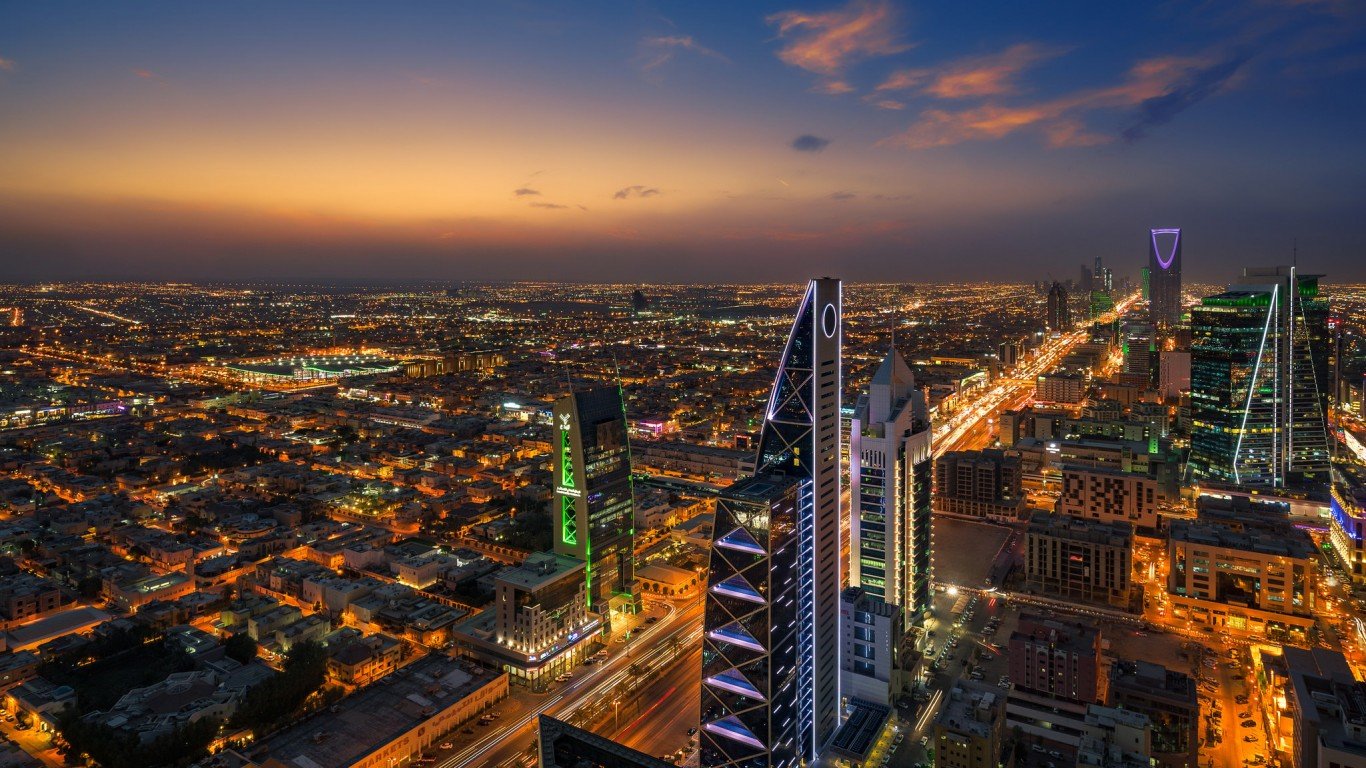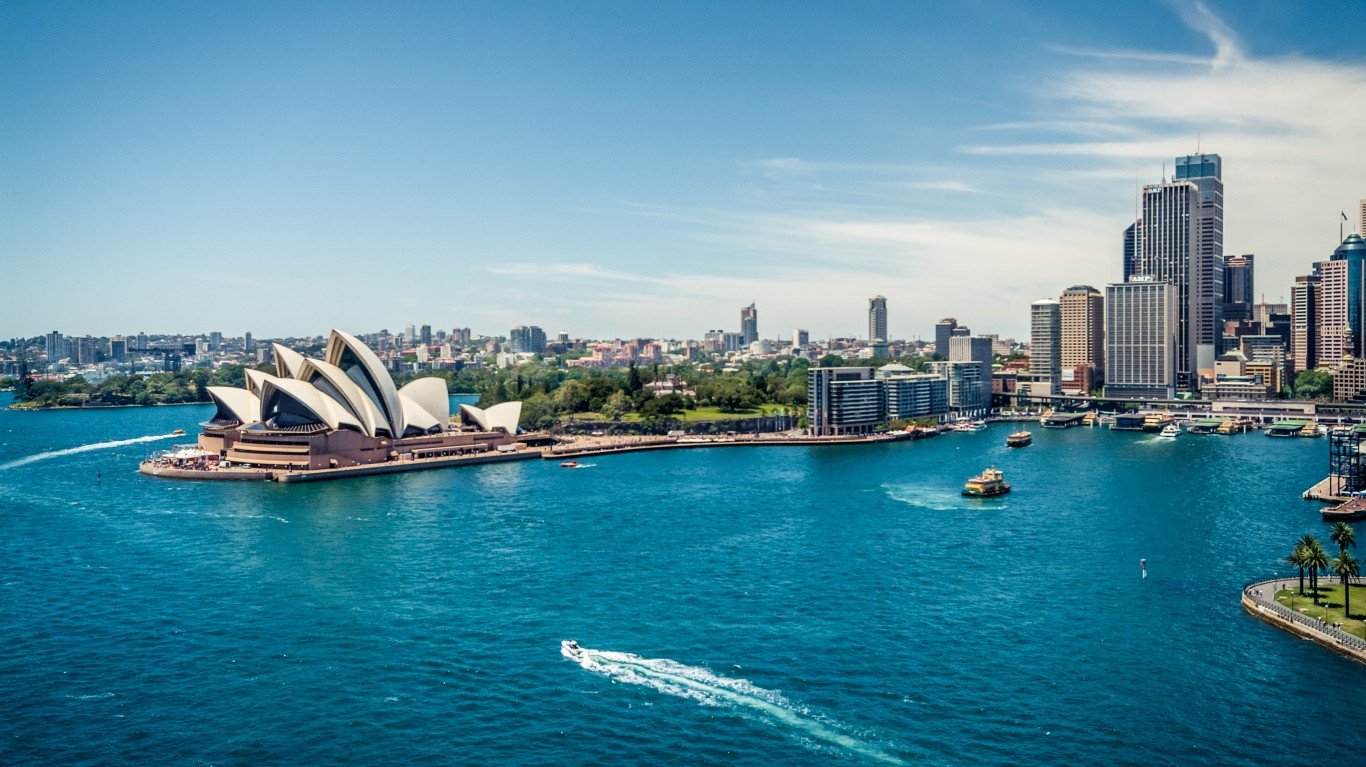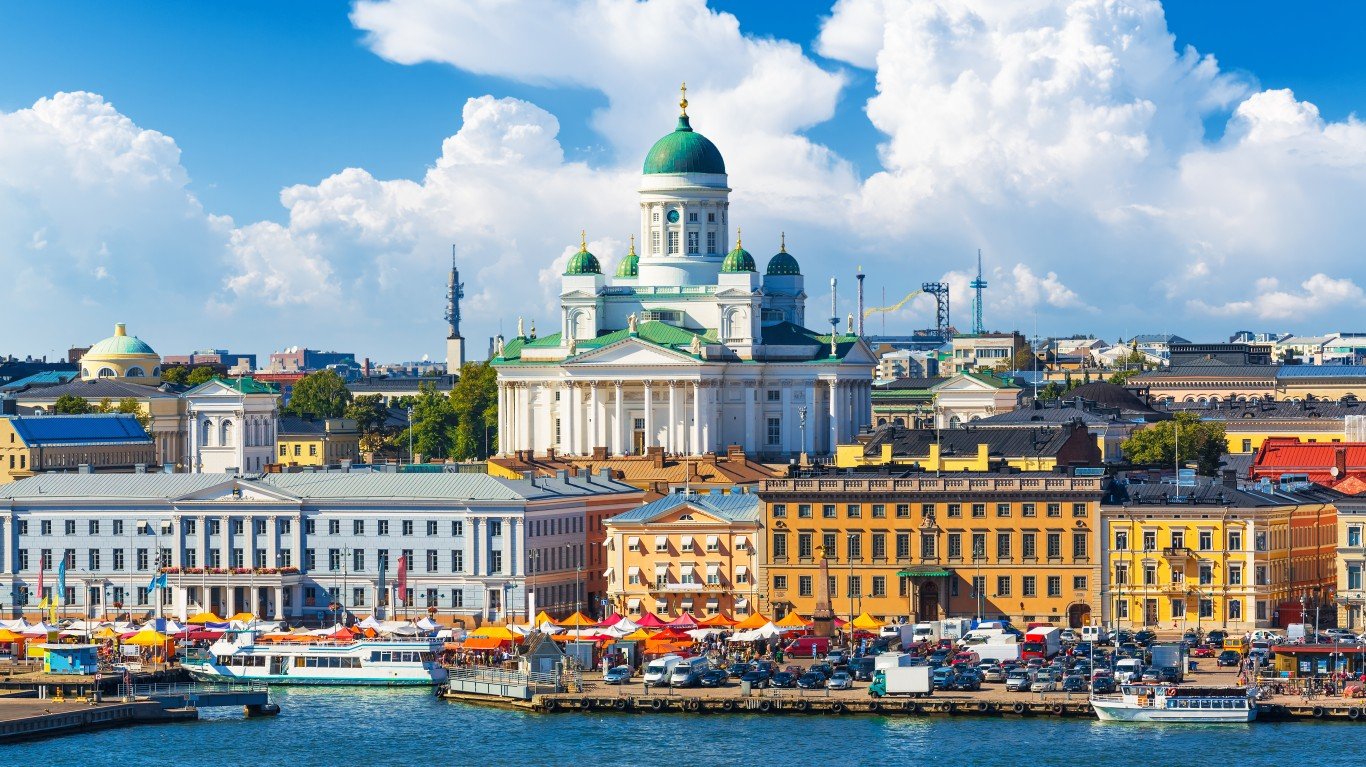
25. Saudi Arabia
> GNI per capita: $47,790
> 2020 GDP: $1.6 trillion
> Population: 34.8 million
> Avg. life expectancy at birth: 75.1 years
Saudi Arabia is the 25th richest country in the world, with a gross national income per capita of $47,790. Worldwide, the GNI per capita is just $17,535. The kingdom ranks as one of the world’s wealthiest countries due mainly to its large oil and natural gas industry.
Saudi Arabia had $228 billion in exports in 2019, roughly 75% of which in the form of different types of petroleum. Oil production accounted for more than 24% of the nation’s total GDP, one of the highest shares of any nation in the world.

24. France
> GNI per capita: $50,400
> 2020 GDP: $3.1 trillion
> Population: 67.4 million
> Avg. life expectancy at birth: 82.6 years
France is one of 24 countries in the world with a per capita income of more than $50,000. The Western European nation had a GDP of more than $3 trillion in 2020, one of just 10 countries in the world with such a large economy.
GNI per capita is a strong indicator of the standard of living in a country and correlates with better access to health care and improved health outcomes. The average life expectancy at birth in France is 82.6 years, nearly a full decade longer than the worldwide average life expectancy.

23. Australia
> GNI per capita: $51,420
> 2020 GDP: $1.3 trillion
> Population: 25.7 million
> Avg. life expectancy at birth: 82.9 years
Australia is the only country from the Oceania area of the world to rank among the richest countries. GNI per capita among the 25.7 million residents is$51,420, and the nation’s 2020 GDP was over $1.3 trillion, the 18th largest in the world.
For nearly all of the wealthiest countries in the world, exporting of goods and services account for a relatively large percentage of their GDP. Generally well above the 29.5% of the worldwide GDP comes from exports. Yet in Australia, exports account for less than 24% of economic output. This is likely due in part to the fact that the country’s export profile is not diverse, largely propped up by natural resources like iron ore and petroleum. This lack of economic diversity could hamper growth in the future.

22. Finland
> GNI per capita: $51,650
> 2020 GDP: $282.6 billion
> Population: 5.5 million
> Avg. life expectancy at birth: 81.8 years
Finland is one of the five Nordic countries, all of which rank among the 25 richest countries in the world. Finland is the least well-off of these five countries (which are Sweden, Iceland, Denmark, and Norway) with a GNI per capita of $51,650.
Finland scored an 85 out of 100 in Transparency International’s Corruptions Perceptions Index, tied for the third best score out of 180 ranked countries. Experts and business people consider the Nordic nation as relatively free of corruption, which means that people and businesses are able to work without concerns of being interfered with by corrupt practices. This lack of corruption helps promote economic growth through innovation.

21. Germany
> GNI per capita: $55,220
> 2020 GDP: $4.5 trillion
> Population: 83.2 million
> Avg. life expectancy at birth: 80.9 years
Germany’s GNI per capita of $55,220 is more than triple the worldwide GNI per capita of $17,535. Like many of the other wealthiest nations, its economy is relatively diverse, with a number of major industries providing a wide range of goods and services, like automobiles, medicine, business services, and more. Economic diversity gives countries the ability to produce goods and services competitively, helping fuel economic growth.
With 83.2 million people, Germany is the second largest of the richest countries in the world, behind only the United States. It also ranks second on this list behind only the U.S. in terms of GDP. At $4.5 trillion, Germany’s GDP is the fifth largest in the world.





